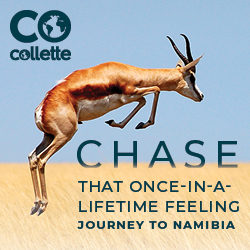How do you describe a region of Missouri where you dine for breakfast on rock ’n’ roll and doughnuts at Hurts Donut in Springfield and then dodge “throwed rolls” during a raucous lunch stop at Lambert’s Café in nearby Ozark? The word “Americana” does it for me.
My trip through southwest Missouri took place last March when I joined a group of writers organized by Travel South USA. We enjoyed places as well-known as Branson and as tiny as Lamar, a blink-and-you-miss-it community that happens to be the birthplace of President Harry S. Truman.
For many reasons, southwest Missouri grabs its share of groups. Carthage, Springfield and Joplin are frequently packaged with Branson, and the George Washington Carver National Monument in tiny Diamond adds a dose of gravitas to the lighthearted fun so prevalent in the area.
We began in Springfield with an overnight in the hip Hotel Vandivort. It seems right that Springfield, as the childhood home to Brad Pitt and the late PGA Tour favorite Payne Stewart, would have a hip hotel or two. Our trip got off to a delicious start the following morning at the Aviary Café and Creperie. Floral arrangements cascade from the ceiling, and the menu features a variety of crepes and breakfast dishes.
American Icon
We made our way to the Carver national monument. I remember studying George Washington Carver a lot in my elementary school days, which I find pleasantly reassuring. Even though the public schools of my youth in the 1960s had only begun the long process of racial integration, this remarkable man was well known to me. I knew him then as a brilliant botanist, scientist and humanitarian.
How telling it is that we don’t even know the birth year for a man of his stature. It could have been as early as 1861 or as late as 1864, but he was born into slavery on a farm at this site. Carver was largely self-taught and was denied formal education until his 20s. He then earned a master’s degree in agriculture from what became Iowa State University.
He was a skilled artist but decided his expertise in research would better serve others. Carver’s work at the Tuskegee Institute in Alabama related to peanut processing for items like inks, dyes and hair products was revolutionary. His discoveries ultimately caught the attention of Thomas Edison and Henry Ford; both sought him out for his ideas.
This rural site includes a visitor center and museum, classrooms — which were filled with kids when we arrived, a Carver family home and the Carver Trail. The “Boy Carver” statue rests in a grove of trees and is worth the brief walk.
“Selfishness and self are at the bottom of a lot of troubles in this world,” Carver once wrote. “So many people fail to realize that serving God and one’s fellow men are the only worthwhile things in life. It is service that counts.”









